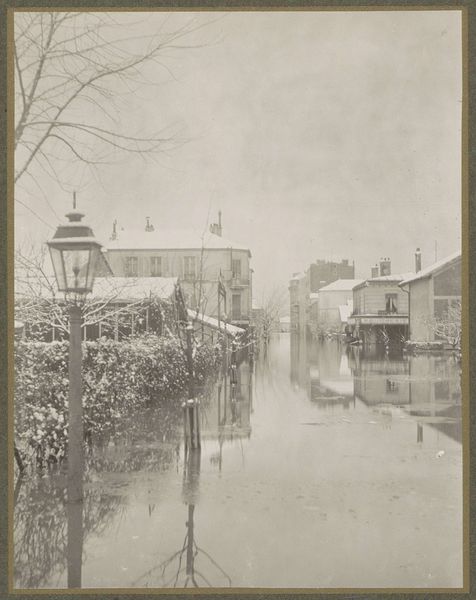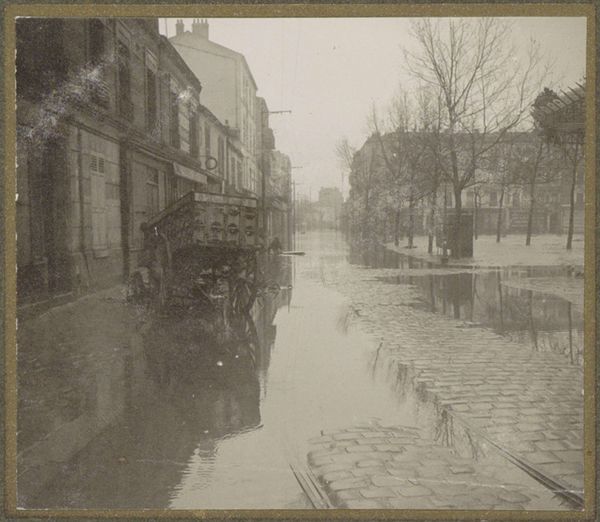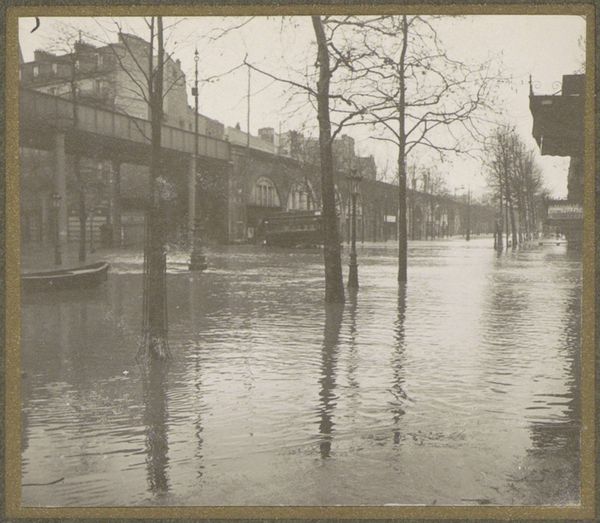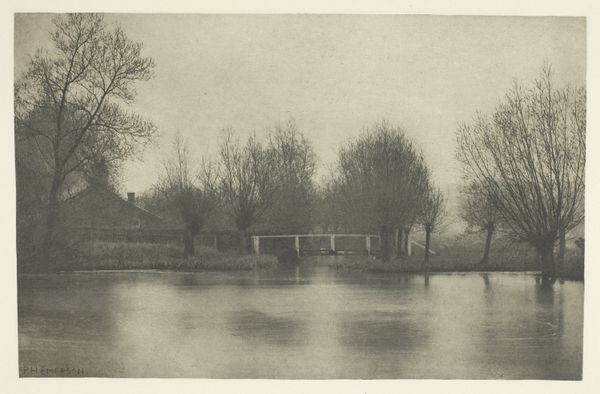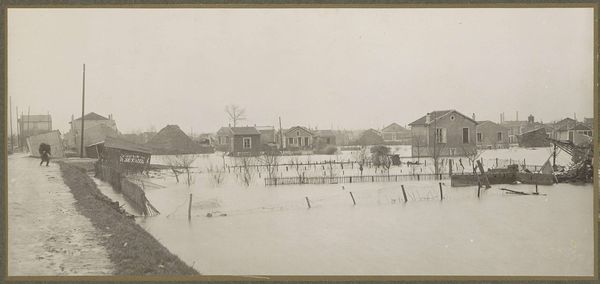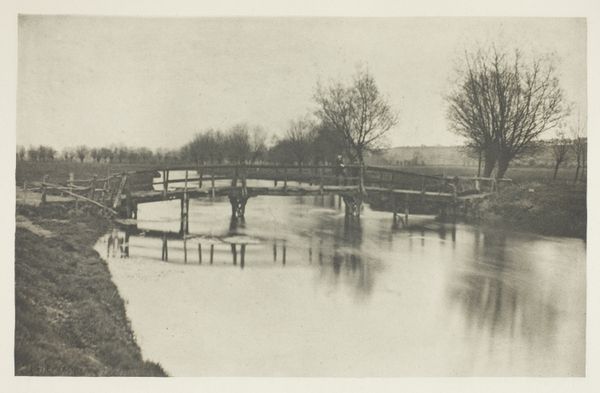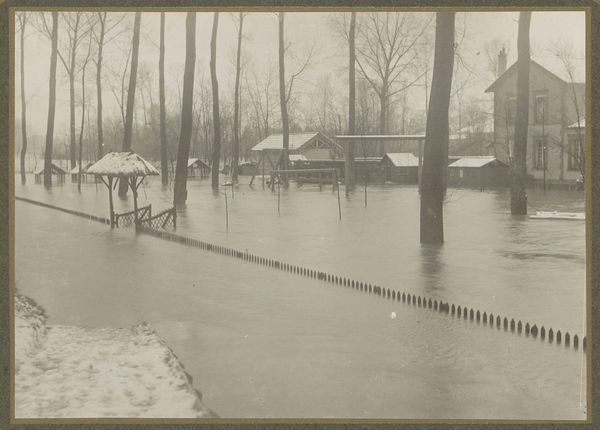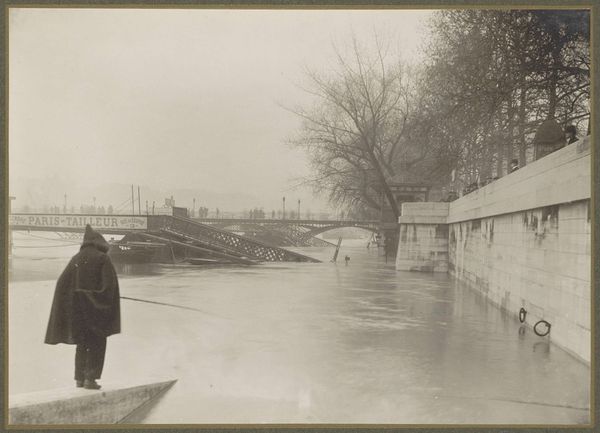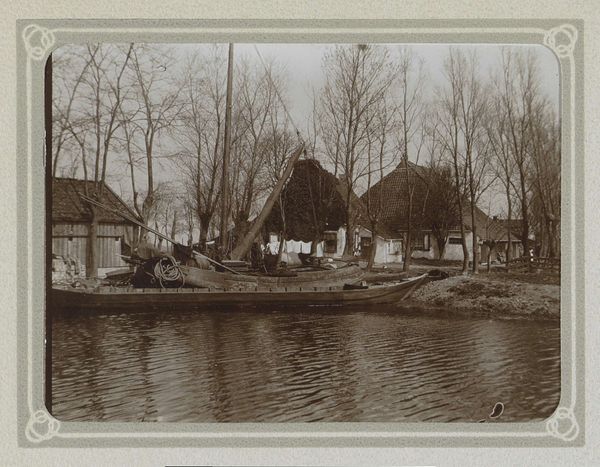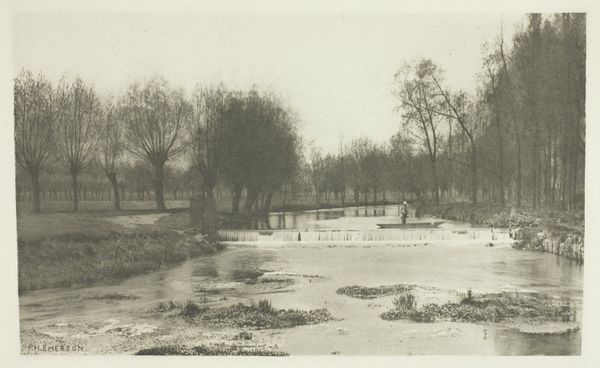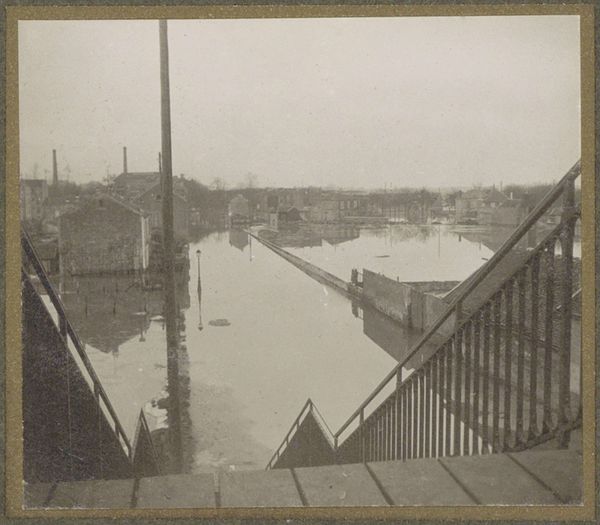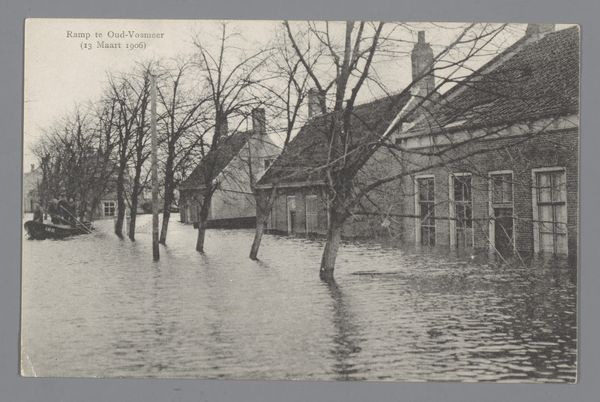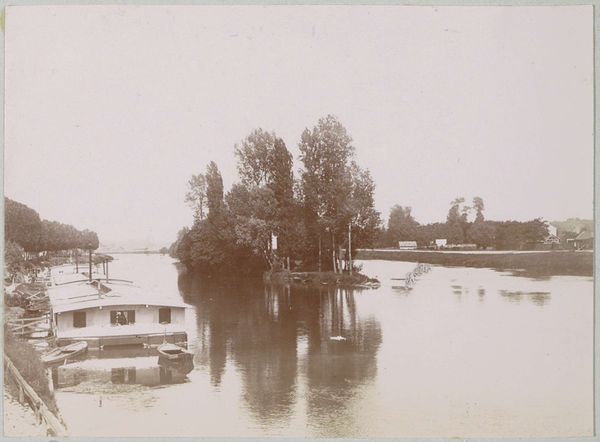
Dimensions: height 52 mm, width 59 mm
Copyright: Rijks Museum: Open Domain
Curator: Looking at this photograph by G. Dangereux, titled "Huizen op een ondergelopen terrein in een buitenwijk van Parijs" from 1910-1911, I'm immediately struck by the overwhelming stillness despite the visible disaster. Editor: It’s a melancholic scene, isn’t it? The flooded landscape reflecting the buildings creates an eerie mirror effect, emphasizing the material consequences of this event in the Paris outskirts. You can almost feel the weight of the waterlogged materials. Curator: Indeed. It speaks to the socio-political context of the period, reflecting a time of significant environmental and societal challenges that perhaps impacted working class families in the region most deeply. Editor: The subdued palette contributes to this feeling. It seems less concerned with portraying beauty than documenting a disruption, the image itself serves as a historical record of the floods in Paris that reflects a social narrative and a clear transformation of an urban landscape, capturing it for posterity through photographic material. Curator: Precisely. Dangereux's decision to capture this scene invites viewers to confront a stark reality of the time. Did such a plain reflection cause debate among photographic societies and public institutions on the power of visual art to display urban decay? I am interested in how he balanced the creative representation of this flooded landscape, knowing the implications on citizens' real lives, without glorifying nor dismissing his context. Editor: One might ask if the mass production and accessibility of photographs helped shift societal opinions, too? There’s also the question of labor, I imagine his photographic process would entail both financial burden, as well as collaboration within the photo shop to achieve this kind of quality in 1910, when image making was still not so democratized. Curator: Absolutely. It encapsulates an interesting commentary about environmental issues. The social role of images from that period is undeniable. It also causes a great feeling of grief to imagine citizens' damaged houses and belongings in 1910 being shown to the rest of Paris. The political and social consequences must've had their weight. Editor: Indeed, the choice of subject reflects a specific worldview. Thanks to the physical preservation of this photograph, now we have the responsibility to unveil its original purpose and implications as much as possible.
Comments
No comments
Be the first to comment and join the conversation on the ultimate creative platform.
